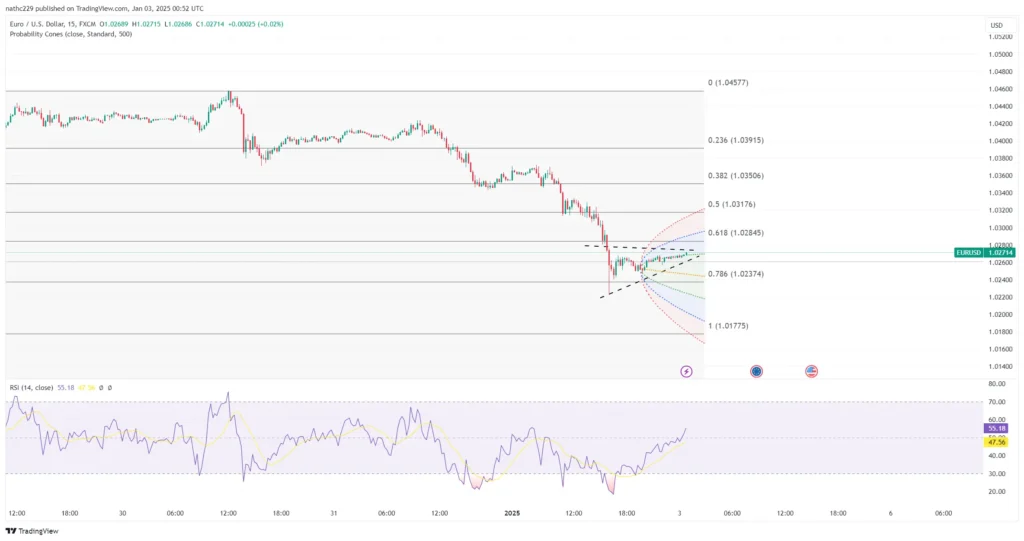
EUR/USD Hits 26-Month Low as Economic Divergence Weighs on Euro
EUR/USD tumbled on the first trading session of 2025, striking a 26-month low at 1.02248 as diverging economic paths between the U.S., euro zone, and China pressured the euro. Weaker-than-expected manufacturing PMI data from China and the euro zone highlighted growth concerns, with China’s Caixin PMI slipping to 50.5, close to contraction territory, and the euro zone’s HCOB PMI dropping further into contraction at 45.1. Meanwhile, U.S. jobless claims surprised to the downside, underscoring the resilience of the U.S. labor market and supporting the dollar. The prospect of the Fed maintaining higher rates longer while the ECB accelerates easing weighed heavily on EUR/USD, widening yield spreads in favor of the dollar.
Technically, EUR/USD remains firmly bearish. The pair is trading below key support levels, including the 5-day moving average and the trendline off November lows. Falling RSI indicates strengthening bearish momentum, with immediate support seen at the 26-month low of 1.02248. Below that, the psychological 1.0200 level could come into play. Resistance lies near the overnight high of 1.03755, with further hurdles at 1.0400 and the 5-DMA. The lack of a meaningful rebound underscores the dominance of bears, with rallies likely to face selling pressure.
Looking ahead, critical data could dictate EUR/USD’s next move. Friday’s German unemployment report and U.S. ISM manufacturing PMI will be closely watched. Stronger-than-expected U.S. data could reinforce the dollar’s yield advantage, pushing EUR/USD toward the 1.0200 support zone. Conversely, any signs of economic resilience in the euro zone may provide temporary relief for the pair. However, with the current bearish trend firmly intact, the euro remains vulnerable to further losses.

